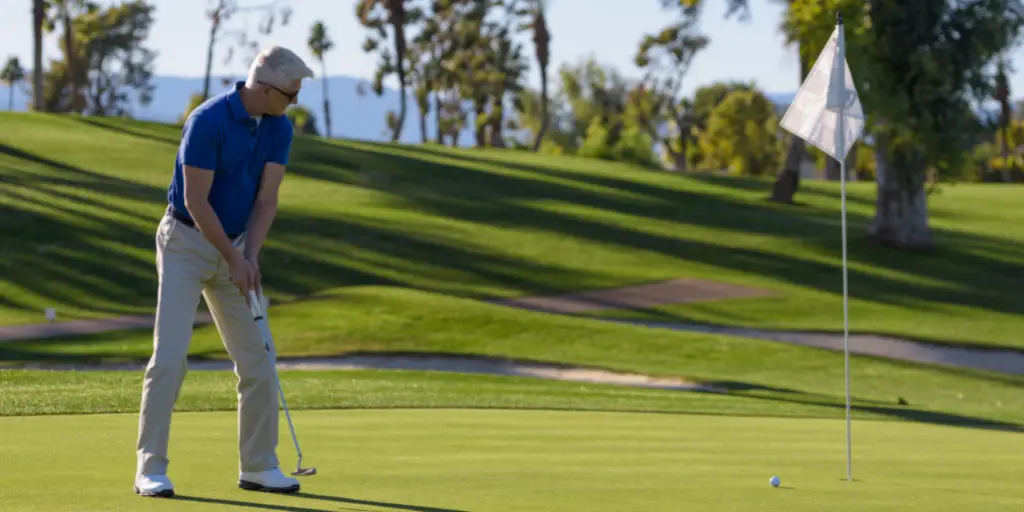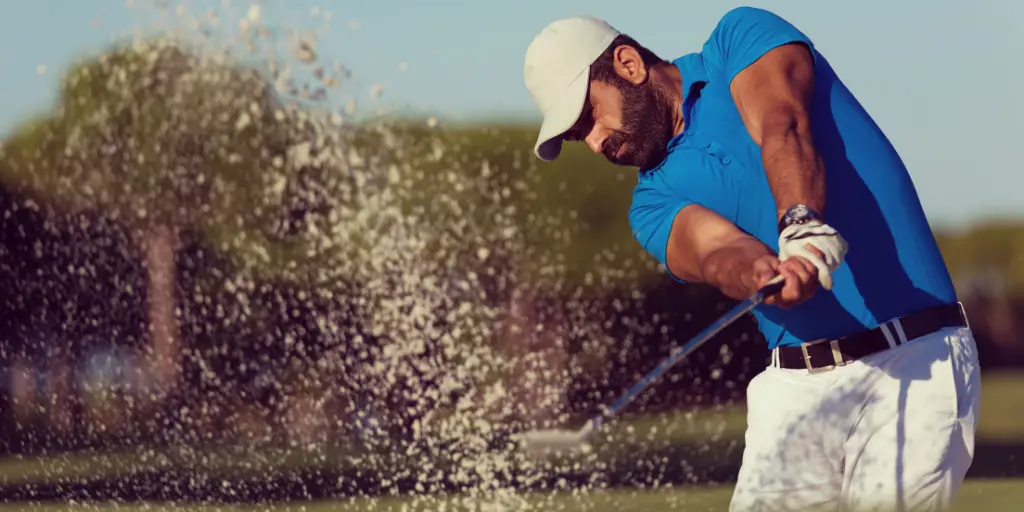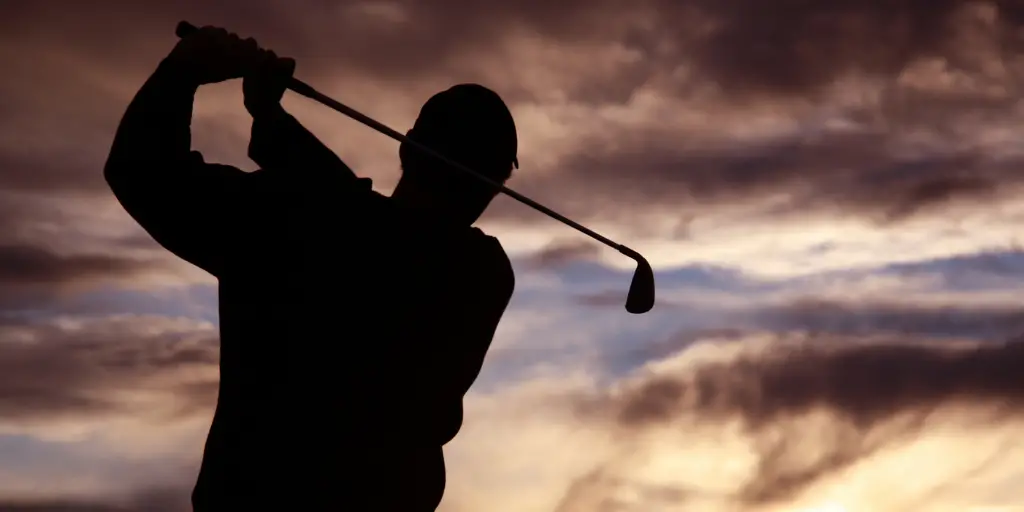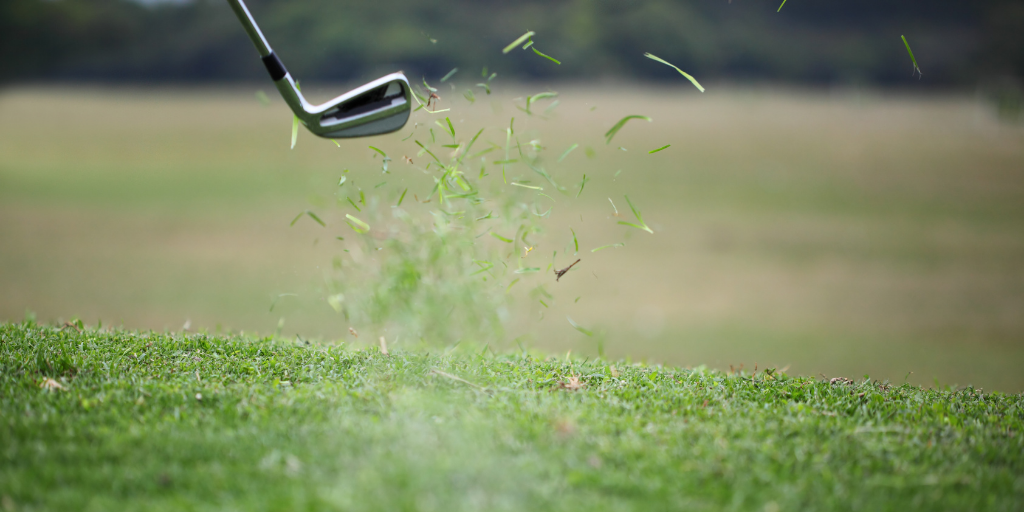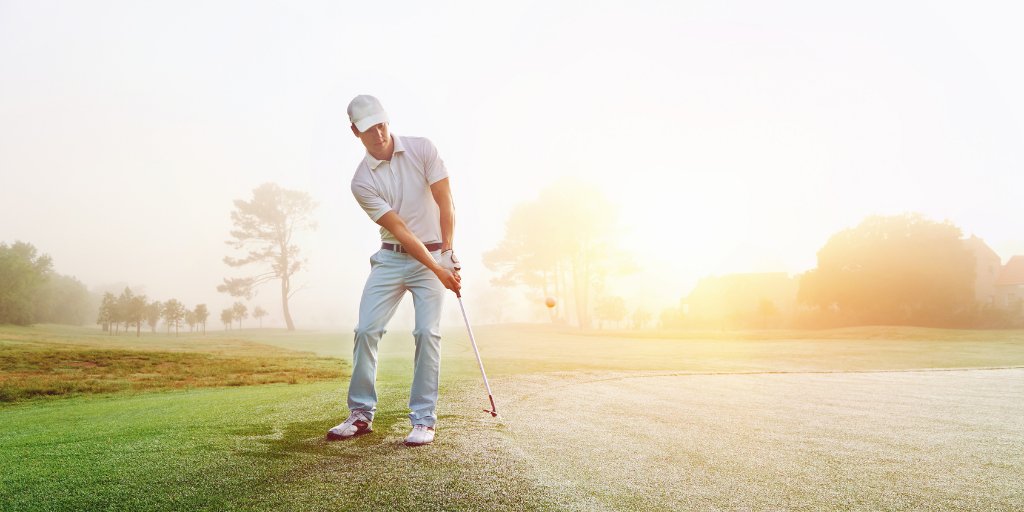Golf is a game of details and nuance. The slightest thing can take your focus off the ball and the smallest of impediments can change the direction and success of your shot.
On the putting green, those details are even smaller, and it is vital that you put yourself in the best position possible every time.
The way you grip your putter is one of these details, and for me it is one of the most important things to figure out to ensure comfort and success with your short stick.
As you read the rest of this article on how to grip a putter, we will break down the six most common grips and why one of them is the right one for you.
What You Will Need
Prior to focusing on your grip, it is important to find a good putter. Go down to your local pro shop or sporting goods store and spend time with different putters.
For most beginners, a mallet style head works best because of its forgiveness and alignment features. People spend tons of time and money trying to get fitted for the right driver or the right set of irons, but your putter is the club that will most directly affect your score, make sure it is the right putter for you.
Also, remember that there are two grips that you have to worry about in putting. Your grip, as in how your hands will be placed on the club, is the subject of this writing.
However, the rubber part at the end of your putter where your hands are placed is also known as the grip. Finding the right grip for your hand size and for the amount of pressure you have in your hands when you putt is an important part of putting.
Breaking Down The 6 Common Grips
These are the six most common putting grips, and it is important that you choose the one that is right for your game. If you have been struggling with the putter for a while, or if you have never really found your stroke, we would suggest changing up your grip, stance, or even your stick to make sure your putting is a strength and not a weakness.
Classic Reverse Overlap
For a long time, golfers used this grip exclusively and to move to anything else was a sign that your putter was struggling. In this grip, for a right-handed golfer, the left hand grips the club above the right hand with both thumbs pointing in the same direction, down the flat part of the grip.

The term “overlap” comes from the forefinger of the left hand sitting on top of the fingers on the right hand. This is still one of the most used grips for any level of golfer. The reverse overlap allows for great feel and it allows your right hand to release the putterhead allowing your left hand to work.
Pros
- One of the best grips for promoting feel.
- This grip feels Natural and athletic giving you confidence standing over the ball.
- It is the oldest and most used putting grip across skill levels.
Cons
- Your right hand can get too active and affect your putting consistency.
- It is not as stable as some of the other grips that will be discussed.
Left Hand Low
This is usually the go-to grip for those golfers who feel like their dominant hand has become too dominant in their putting stroke. You do not want your right hand taking over your putting stroke, and this grip allows you to keep a solid left wrist and potentially neutralize the tendency of your dominant hand to dominate.

This grip can also even out your shoulders because of how you are reaching for it and it could help keep your putting stroke shallow and with less room for errors.
Pros
- It is a good way to keep your right and left hand working together.
- This grip can help keep your shoulders even and working together.
- It can take away from some of the twist that you feel your clubface making at impact.
Cons
- It is counterintuitive to most people to hold a club, bat, etc. this way because we have been taught for so long that this is “cross-handed.”
- It takes some getting used to, so you have to work at it.
Claw
The claw is basically any variation of your putting stroke where your right hand is not fully gripping the club. Instead, you are holding it in a “claw” fashion so that only one or two fingers are touching the club along with your palm which is facing towards the target.
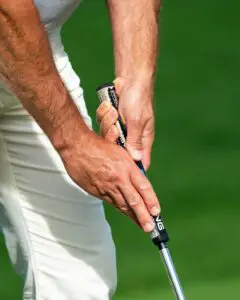
It looks strange, it is not a common stroke, but it has been used by some of golf’s best players. It puts your dominant hand in a weaker position and changes the theory of putting from being controlled by your hands to being controlled by the line of your putt and your body getting you there.
Pros
- When you are putting poorly, sometimes you just need a change, and this would be a pretty big change.
- It moves golfers from thinking of putting as “hand dominated” to being a concerted effort to keep the club on the right plane and line.
- It makes your dominant hand less dominant.
Cons
- It is odd looking and not “cool” or “attractive” on the course.
- It is not as natural feeling as the other putting strokes described above.
- Sometimes you dominant hand will still affect your putting even from this position.
Arm Lock
The “arm lock” grip is when you use a longer than average putter and “lock” the top part of your grip to your forearm. There is nothing that actually locks the putter there, but it is a way to lock the putter to yourself so that it does not move on impact and so that you have more control throughout your stroke.

Many years ago, belly putters were banned because they had something to anchor to, namely a players “belly.” Many golfers and pros want this type of putter to be banished for the same reasons, but for now it is legal and it works well for some of the best golfers on tour.
Pros
- It is an easier way to putt, so players who use it have an advantage over those who do not.
- Your putter is anchored to a part of your body that will not move giving you ultimate control over speed and forgiveness.
Cons
- The majority of golfers want this grip banned which means if you learn it and train to use, you could be wasting your time.
- It is not a natural/athletic feeling stroke.
Prayer
This does not refer to what many golfers do when stepping up to a difficult putt, but it does have to do with your hands being “together” like you are praying when holding the putter.

Your palms are facing each other and your hands are square with the putter hanging down at the midpoint of your body and hands. Your shoulders start square, your hands are not as involved in the stroke, and your putting stroke is a much simpler motion. This grip is becoming more popular because it is easier to control and there is less room for error.
Pros
- Your shoulders and hands start square.
- It is a very simple stroke with less to go wrong.
- Your dominant hand is somewhat neutralised to work along with your other hand.
Cons
- You need to have a much thicker grip and it can be difficult to know exactly what you are looking for.
- It is not an athletic feeling grip or stroke.
Long Putter
The first question you have to ask is, “how long is the putter?” Belly putters are illegal now, but a taller putter that you do not anchor to any part of your body is ok to use.

To putt with a long putter, you should hold the club in the claw grip with your lower hand and move that hand about ¼ of the way down the club. You should make sure the club is hanging in the center of your body and then you should make a stroke with your elbows held in close to your body and your torso working along with your arms to make the stroke.
Pros
- A long putter can take your wrists out of the stroke.
- You can find increased ball control and greater stability in your stroke.
Cons
- It looks and feels different at first so it takes some getting used to.
- There are more moving parts and not as much stability in the stroke so errors may be more common.
Finding The Right Rubber Putter Grip
It is important to decide which grip (the way that your hands hold onto the putter) to use before deciding which grip the (rubber at the end of your putter where your hands go) to use. The way that you grip the putter will affect the type and size of rubber grip you will need.
Paddle
The paddle grip gets its name from the flat front section of the grip. It is not rounded off like most golf clubs and putters, but there is a flat section that runs the length of the grip and it faces out so that your thumbs will almost always be on it. It is a paddle shape because you have the handle with a flat side for striking.
Pistol
The pistol grip is actually shaped like the grip on a pistol, hence the name, “pistol grip.” There is a protruding section in the back that helps golfers correctly grip the putter while the rest of the club feels like a baseball bat. This type of grip, along with the paddle grip, are the two most popular.
Round
Round grips are more common in other golf clubs because it gives your wrists a little more freedom. That is great when you are hitting an iron, but when you are putting, the less wrist, the better. It is the most natural feeling grip to many people, but fewer golfers use it on their putter because of the freedom it gives.
Final Thoughts On How To Grip A Putter
We hope you enjoyed this tutorial, and most of all we hope it will help your golf game. Putting is important because you will hit more shots with your putter in every single round than you will with any of your other clubs.
We believe if you find the right grip then you are a step closer to being a great putter, and if you are struggling sometimes a simple change of your putter grip will make all of the difference. If you enjoyed this or learned something from it, share it with your friends and family and let us hear from you on any of our social media accounts.

